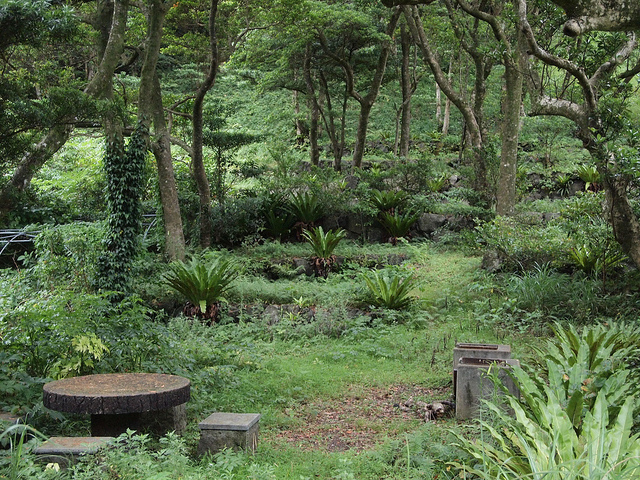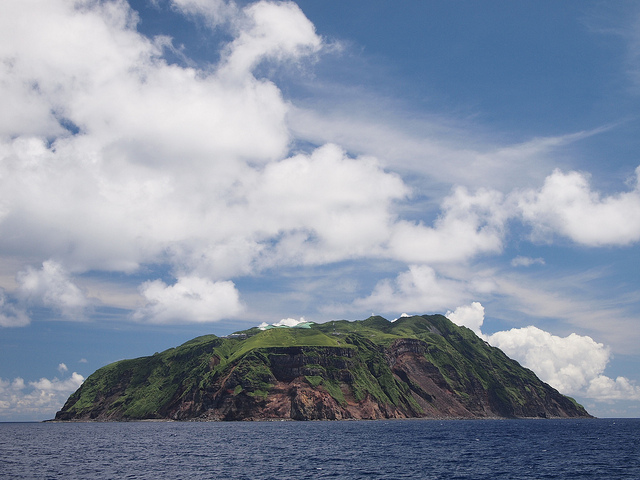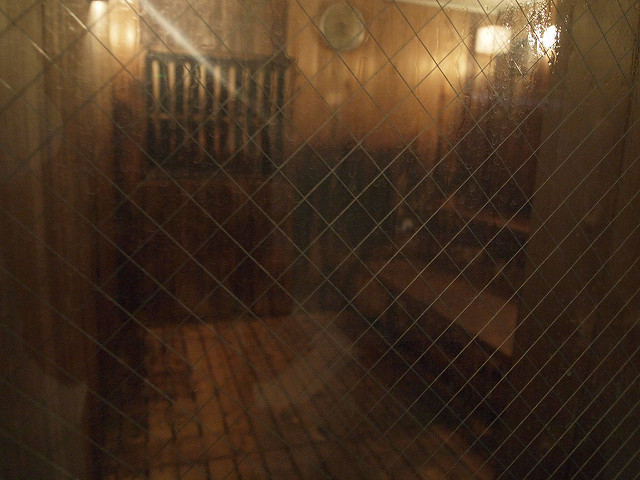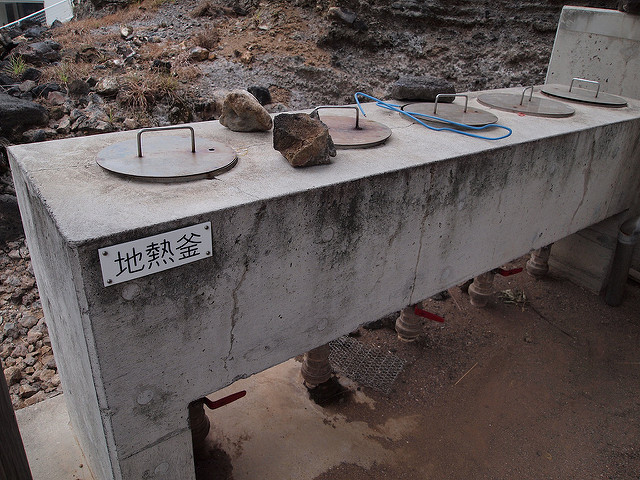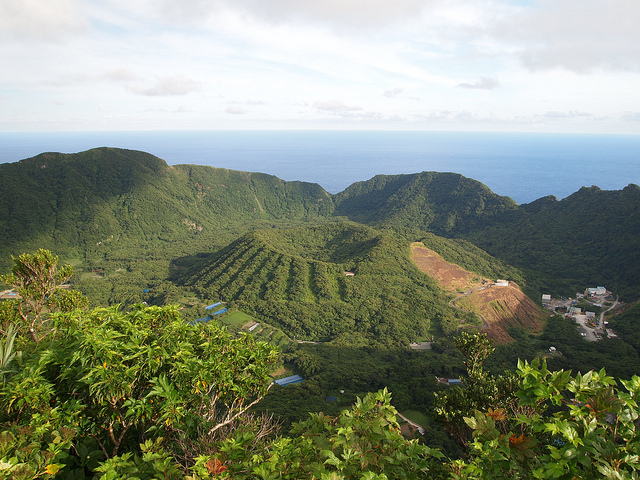Aogashima
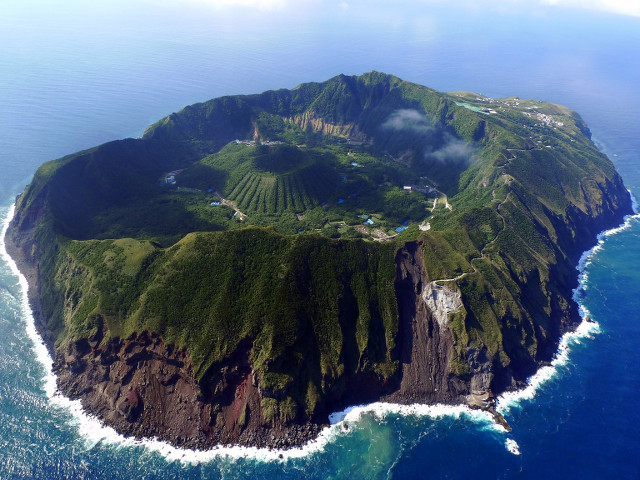
Imagine if this was your whole world, with the nearest inhabited place over 70km away.
One of the best things about Japan’s volcanoes is that they’re really easy to get to – you don’t have to dedicate days of your holiday journeying to the back of beyond. That certainly can’t be said about Aogashima – a tiny island in the Philippine Sea, more than 350km south of Tokyo. Aogashima isn’t an option for a whistle-stop fast-paced see-everything trip to Japan – but it is very rewarding if you’re prepared to splurge a few days on an adventure.
Aogashima isn’t an island with a volcano – the island is the volcano – or at least its top. Despite being incredibly isolated and just 3.5km long by 2.5km wide, some 206 brave people call it home: The last eruption in 1785 killed 140 people – almost half the population at the time. Aogashima may have been quiescent since then, but it is still active, and it’s only a matter of time till it once again flaunts its ferocious temper. Thankfully volcanology has advanced to the stage where we can expect advance warning of the next eruption, so there’s no need to worry about being blown sky-high.
A bigger concern should be getting to and from Aogashima. You have two options: a 20 minute flight by helicopter or a 2½ hour boat trip. Both services connect to Hachijojima Island 71km to the north, the nearest inhabited location. Unfortunately, neither is particularly reliable owing to unpredictable and often extreme weather. The seas around Aogashima are notoriously rough, and the ferry is cancelled as often as not. The daily helicopter flight is more dependable, but if a storm comes along you could end up stranded on the island for several days.
It’s probably not sounding very appealing yet, is it? Well, there must be some reason that 200 people choose to live here – and Aogashima does have plenty of appealing qualities. Officially there are two hamlets on the island: Yasundogo and Nishigo, but they’re so near each other they almost touch – effectively forming a single village. They lie on the north side of the island, precariously perched on the outside of the volcano cone. Unfortunately, as with most Japanese architecture, the village is an eyesore: ugly concrete boxes and rusting iron roofs. There’s a post office, several #minshukus ( http://www.unmissablejapan.com/sleeping/minshuku ) and a school. There aren’t any cafes or restaurants, but the minshukus all provide meals and there is a village store and an izakaya (a pub that serves food). So far, none of this has given much reason to visit, so let’s move on and consider Aogashima itself.
Generally Aogashima is a bit warmer and a bit wetter than Tokyo. At 1.5km across, the main crater takes up most of the island. It’s a lushly vegetated bowl of greenery surrounded by a steep ridge that reaches a maximum height of 423 metres. Cliffs descend to the sea on all sides except the north, where the village sits atop a gentler slope. Within the volcano is another smaller cone, with its own mini-crater. A few small plots are used for farming, and in places steam rises from the ground – reminding you that this island is still alive.
Hiking trails and a road climb over the crater wall and down to the village, while another trail heads out to a lookout perilously perched on the outside rim. The road continues through a tunnel in the crater-wall, emerging next to the harbour on the southwestern side of the island. This is where the ferry calls, when the sea’s not too rough. You can check the conditions before you go, as there’s a video feed linked up to the village.
What surprised me most about Aogashima is just how many cars there are, despite there being nowhere much to drive them – from the village across the crater and through the tunnel to the port is about it. There’s a geothermal sauna near the inner cone – powered by the volcano, which has separate rooms for men and women, as well as a row of pots outside where you can cook your own food in the volcanic heat. And even here, miles from civilization, a vending machine has sprung up. Nearby is a shop that sells salt made by evaporating seawater over volcanic vents. You can also sample locally-made shochu (a Japanese spirit), but that’s about it as far as attractions go.
Aogashima’s number one pull is probably the lack of very much to do at all. OK, so there’s hiking – but you could explore the whole island in a few hours. The beauty of Aogashima is that it’s a serene little oasis all on its own – a world away from the hectic mania of Japan’s towns and cities. The locals are friendly and welcoming – they’re used to a steady trickle of tourists coming to visit. If you want to take it easy and recharge your batteries, this is the place for you. With a bit of luck, you might even get bored – something very hard to achieve on the mainland.
The best place to stay is probably at the campground – it’s right inside the crater – and it’s free. You can get more information about accommodation by contacting the village office on 04996-9-0111, kankou@vill.aogashima.tokyo.jp or via their website. Helicopter tickets can be bought from the TAL counter at Hachijojima Airport (¥11,500 each way, the helicopter can take up to nine passengers) or booked on line. Ferry tickets (¥2,500 each way) are sold at Sokodo Port on Hachijojima. Hachijojima can be reached from Tokyo by either plane or boat.
Usu and Lake Toya

